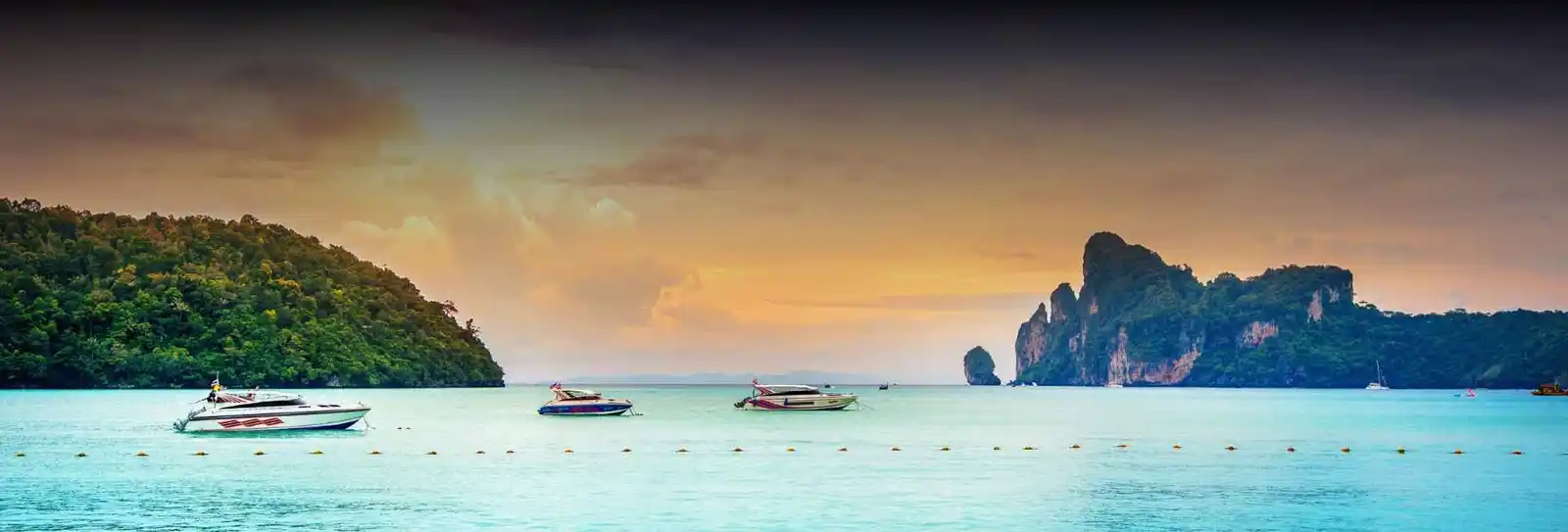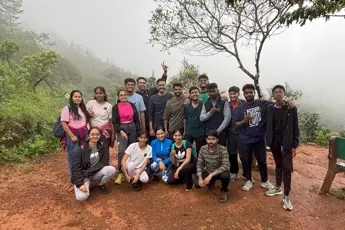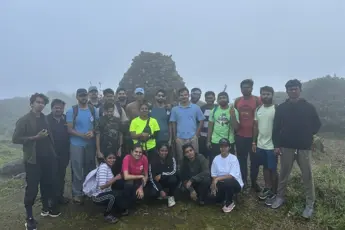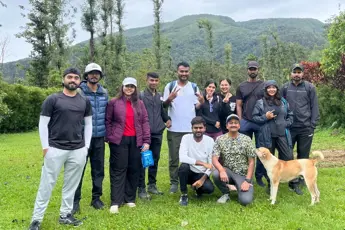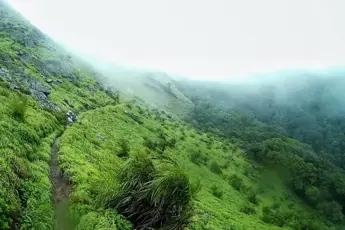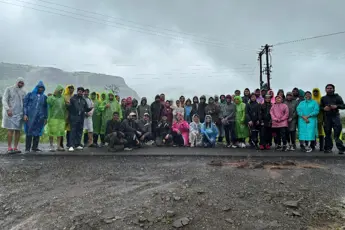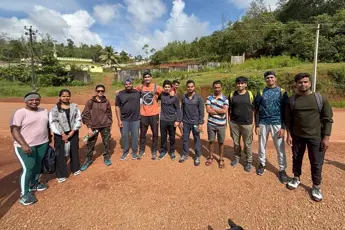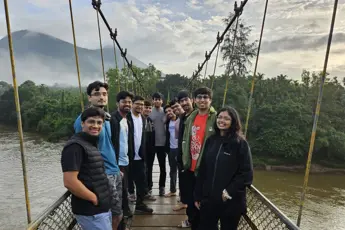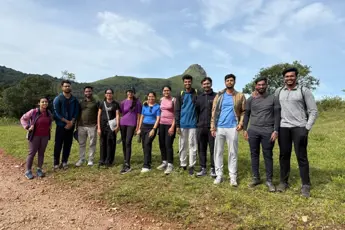
India is a country of breathtaking contrasts, where snow-capped mountains kiss beaches, and adrenaline-pumping adventures are kissed by soul-enriching retreats. You are a peace lover in search of peace or an adrenalin junkie in search of thrills; India offers the world's best of both. And the icing on the cake: wake up to dawn mountain treks in the Himalayas and finish with a sunset beach yoga session. From the Himachal Himalayas to Kerala backwaters, here's how you can plan the ultimate holiday schedule with action as well as relaxation.Experience the Best of Both Worlds: Active and Relaxing Trips in India1. Rishikesh, UttarakhandRishikesh is one of the biggest spirituality and adventure tourism destinations, located in the state of Uttarakhand on the foothills of the Himalayas. Rishikesh has also been called the "Yoga Capital of the World" and the "Gateway to the Garhwal Himalayas." Rishikesh, located on the sacred river Ganges, is spirituality, adventure, and nature all wrapped together. Rishikesh is heaven for someone seeking peace, enlightenment, or an adventure sport.History of RishikeshRishikesh was a good spiritual centre right through the ages. Rishikesh was baptised with the Christian name just as the very same after Lord Vishnu, who had prayed at the location, and for the name 'Rishikesh' in Sanskrit, which is also synonymous with 'Lord of the Senses.' Rishikesh has been drawing saints, sages, and pilgrims all across India right from ancient times because it is located close to holy shrines and temples. The city gained popularity in the 1960s when The Beatles came to the city and stayed in the ashram of Maharishi Mahesh Yogi. This attracted a flow of yoga, meditation, and spiritual seekers from across the globe.Around Places to Visit RishikeshHaridwar: It is just 25 km from Rishikesh, and Haridwar is another sacred city on the Ganges, famous for its ghats and the Ganga Aarti.Neelkanth Mahadev Temple: A Lord Shiva temple at a distance of approximately 12 km from Rishikesh. Pilgrims' favourite among top topmost popular places.Rajaji National Park: A Wildlife enthusiast's paradise, a national park approximately 20 km from Rishikesh, has all kinds of wild animals like tigers, elephants, and leopards.Triveni Ghat: It is the pilgrim’s holy ghat where, every day, popular Ganga Aarti is carried out, which is attended by enormous crowds.Kunjapuri Temple: It is located very far from Rishikesh and offers a bird's eye view of the hills surrounding it and the Ganges.Best Time to Visit RishikeshThe weather is moderate, i.e., 15°C to 30°C.Best suited for adventure pursuits (such as white-water rafting, bungee jumping) and spiritual pursuits (such as yoga retreats and watching Ganga Aarti).Very hot during summer (May-June) and heavy monsoon showers in July-August, which would be bothersome for outdoor pursuits.How to Reach RishikeshBy Airport: The Closest airport is Jolly Grant Airport, Dehradun, 20 km from Rishikesh. Taxi or bus facility from the airport to Rishikesh.By Train: Rishikesh railway station is also very well linked to Delhi, Haridwar, and Varanasi cities. Trains like the Shatabdi Express link Delhi to Rishikesh.Road: Rishikesh is also easily accessible by road from North India. Bus facilities are regular too from Delhi, Haridwar, and Dehradun. It's a 6-7 hour drive from Delhi.Active Rishikesh ActivitiesWhite Water Rafting: White-water rafting of the River Ganges in Rishikesh is famous all over the globe, particularly between September and April (winter season). Rapids are grade I to grade IV and are really enjoyable.Bungee Jumping: Jumpin Heights adventure resort in Rishikesh offers the tallest bungee jump of 83 meters high over a green grassy valley. It's an adventure sport for the person who desires to take a huge dose of adrenaline rush.Cliff Jumping: There are some spots on the Ganges where there are cliffs that are ideal for cliff jumping. It is a thrill for adventure lovers, with natural pools at the bottom where one gets to unwind after leaping off them.Relaxing things to do in RishikeshYoga Retreats: Rishikesh is world-famous for yoga and meditation retreats. Whether a beginner or experienced yogi, one can have a lot of information about ashrams that conduct a series of courses in yoga, meditation, and health.Ganga Aarti: Evening dusk at Triveni Ghat, the Ganga Aarti is a daily evening prayer, song, and chant to the Ganges River at dusk. Music, atmosphere, and visual harmony create a serene, divine, and perfect atmosphere.Riverfront Cafes: There are plenty of riverfront cafes along the Ganges where one can sit and have a meal in a quiet area and be at a place where one can observe the river's flow. All such restaurants provide wonderful views of the surrounding mountains.2. Manali to Kasol, Himachal PradeshManali-Kasol road passes through Himachal Pradesh's most beautiful landscapes. The location of Parvati Valley is Kasol, which is loved its nature, serenity, and cosmopolitan Israeli culture. Kasol, situated by the Parvati River, green woods, and snow white mountains, is a great holiday destination for adventure lovers as much as it wishes to relax and attain tranquillity. Fascinating and worthy of being seen by themselves valley and mountain landscapes are blessed Manali Kasol drive.History of KasolKasol is a newly established village with culture-based history, and it was established in the 1990s when tourists, particularly the Israeli backpackers, started coming to visit it because of its natural beauty and peaceful atmosphere. Kasol then became a centre of Hippie culture and international travelers where there are many restaurants and cafes with Israeli food and hospitality. It is not commercialised but has a peaceful, rural-like atmosphere.Where to Go Around KasolKheerganga: Most famous trekking destination, Kheerganga is a serene grassland at 3,050 meters. The trek has divine views of the Parvati Valley and culminates in a natural hot water spring at the summit. One of the tallest points in and around Kasol to trek.Manikaran: 6 km from Kasol, Manikaran is famous for sulphur springs and Manikaran Gurudwara. Pilgrims visited the destination to take a bath in the healing sulphur springs.Tosh Village: Picturesque village on the western fringes of the Parvati Valley, Tosh is a mix of nature, local culture, and trekking.Rasol Village: A peaceful village and rural lifestyle in a peaceful location, Rasol is ideal for those who do not want the crowd. Kasol to Rasol trip is just great.Solang Valley: Second to Kasol, Solang Valley is renowned for adventure activities like zorbing, skiing, and paragliding.Best Time to Visit KasolSummer (March to June): Ideal weather with 10°C to 25°C temperature, ideal for outdoor tourism.Autumn (September to November): Provides a good climate and nature view with 5°C to 20°C temperatures.Winter (Dec to Feb): If the person likes travelling to a snowy area, then the winter season is liked, but the weather is sub-zero.Monsoon (Jul to Aug): It rained so intensely that landslides happened during this month, and therefore, travelling is not safe.How to Reach KasolBy Airport: The nearest airport is Bhuntar Airport, which is 31 km from Kasol. Bhuntar Airport is well connected with the metro towns of Delhi and Kullu. A taxi or a bus can be booked from the airport to Kasol.By Train: The closest railway station is Joginder Nagar Railway Station, which is 140 km away from Kasol. However, it is not well connected, and hence one takes the train to Kullu or Manali and the taxi or bus from there to Kasol.Roadways: Kasol is well connected by road from Manali (approximately 75 km) and other towns such as Kullu (approximately 35 km). State transport buses and private taxis provide connectivity to such towns, and road travel is highly convenient.Active Activities in KasolKheerganga Trek: Himachal Pradesh's most favourite trek is the Kheerganga Trek because of its mood and religious significance. The 12-13 km trek offers through dense forests, serene river beds, and countryside grasslands to Kheerganga's hot springs, where trekkers relax after a tiresome trek.Solang Valley paragliding: Solang Valley in Kasol is well known for zorbing, paragliding, and skiing adventure sports. Solang Valley white-colored mountain valleys and grasslands sloping gently with waves, makes this location just perfect to have the adventure of paragliding.Kasol recreational activitiesManikaran Hot Springs: Manikaran, which is just a few kilometres away from Kasol, is famous for its hot springs. Sulphur water has healing characteristics and is one of the most popular destinations for relaxation and rejuvenation. The hot springs are located near Manikaran Gurudwara, so the tour is filled with religious essence too.Kasol River Side Cafes: Kasol has river-side cafes along Parvati River where one would sit, have hot coffee, and watch the river flow by and the hills. The restaurants are mostly Israeli cuisine, and therefore, it is a place where one can sit and mingle with other tourists.3. GoaGoa is the smallest Indian state by area and a tropical paradise on the west coast of India, and is very sought after for its picturesque beaches, nightlife, Portuguese culture, and balmy climate. Separated from South Goa and North Goa, it is a mix of beach rave parties with wonderful party culture, colonial villages, alternative getaways, and vibrant culture. Family tourist, honeymoon couple, or backpacker, Goa has something in store for everyone, from the party shores of Anjuna and Baga to the peaceful oases of Agonda and Palolem.History of GoaThe history of Goa is an interesting Indian-European mix occupied by the Hindu kingdoms and the Muslim Bahmani Sultanate, but later conquered by the Portuguese in 1510 and ruled for more than 450 years. Colonisation had taken a deep root in Goa now, and its cuisine, architecture, religion, and culture went through a gigantic transformation. Cathedral, church, and fort are proof of the colonial rule, because partially it is still in old Goa, partially it is a UNESCO World Heritage Site. Goa was integrated into the Indian Union when the government of Portugal collapsed in 1961, and since then has flourished to be one of the most popular tourist destinations for locals and foreigners alike.Places of Interest Near GoaOld Goa: Old Goa is known for its picturesque colonial-era churches and cathedrals like the Basilica of Bom Jesus and Se Cathedral. It's heaven for history and architecture enthusiasts.Dudhsagar Waterfalls: Located at the border of Goa and Karnataka, the four-level Dudhsagar falls is India's tallest fall and is divine in beauty, especially during monsoon.Chorla Ghat: Scenic hill green weekend getaway at the trijunction of Goa-Karnataka-Maharashtra, ideal for nature trekking and nature enthusiasts.Divar Island: A Peaceful island off Panaji, with serene Portuguese villages, old churches, and a sweep of Goan landscape.Spice Plantations: Tour spice plantations at Ponda during the day to observe and learn about Goan farming and have a Goan traditional lunch.Best Time to Visit GoaTemperature: 20°C to 30°C, which is really the best to enjoy at the beach and sightseeing places.Festival Season: It's Christmas, New Year, and the best Goa Carnival season time and thus the most happening time.Monsoon (June to September): Goa is green and grassy, best for nature lovers and off-season travellers, but without water sports.Summer (March to May): Can be hot and humid, off-season and touristy, lower hotel tariffs, best for budget travellers.How to Reach GoaBy Airport: Goa state has two airports, Goa International Airport (GOI) and recently commissioned Mopa Airport (GOX). Both are properly linked with the Indian cities of Delhi, Mumbai, Bangalore, and foreign cities.By Train: Two significant railway stations, Madgaon (Margao) and Thivim, are available to serve North Goa and South Goa with connectivity to Indian cities of Mumbai, Pune, and Delhi.By Road: Goa is connected by road to the surrounding states. There are regular buses from Karnataka, Maharashtra and neighbouring Goa states. Car on hire/bike, or self-driving, also turns out to be handy.Active Activities in GoaBaga and Anjuna Beach Water Sports: Baga, Calangute, and Anjuna beaches offer some water sports such as parasailing, jet-ski, banana boat ride, scuba diving, and snorkelling. It is operational during October and April months when the sea becomes safe and smooth.Fort Treks: Not only are Goa's beaches picturesque, but the place is dotted with stunning forts like Chapora, Aguada, and Cabo de Rama. The fort treks of short distances give the travellers a bird's eye view of the beach, river, and forests.Recreational Activities in GoaSunset Beaches: Palolem, Ashwem, and Vagator beaches are ideal to relax and unwind in marvellous sunsets. These quiet stretches are ideal for honeymooners, singles, and couples looking for a quiet ambience without the tourist bustle.Wellness Resorts: Yoga, meditation, massage, and holistic healing are provided by all the major Ayurvedic resorts and wellness spas in Goa. They are the ideal destination to revitalise your body and mind in nature. Luxury at an Affordable Price.Seafood Cuisine: Goan food is oceanic and Portuguese in influence. Spicy seafood such as prawns, crab, and fish curries are relished in sea coast eateries as well as high-end restaurants. One must not miss the experience of relishing Goan cuisine such as Fish Recheado, Prawn Balchão, and Bebinca dessert.4. Ladakh, Jammu & KashmirLadakh in northwestern-most India, within the union territory of Jammu & Kashmir, is a high desert country of arid land with world-renowned landscapes, peaceful monasteries, and rich Tibetan-Buddhist heritage. Surrounded by the Karakoram and the Himalaya mountain ranges, Ladakh is famous for snow-mountain ranges, treeless valleys, ice-born rivers, and shimmering lakes. Also referred to as the "Land of High Passes," it is an odyssey of adventure for surrealism as for a spiritual quest. As a meeting point of nature and the spiritual, Ladakh is heaven for pilgrims.History of LadakhLadakh traditionally was a key stop on the Silk Route between Central Asian merchants, Tibet, and northern India. The region was dominated by Tibetan Buddhism after the 8th century and has preserved a great deal of this cultural baggage until the present. Ladakh was an independent kingdom until the 19th century, when it became part of the Jammu & Kashmir princely state. It has now been an India Union Territory since 2019. Murals and ancient stupas abound everywhere, and monasteries bear witness to their glorious religious history and past.Places of Attraction Around LadakhPangong Lake: It is at a height of 4,350 meters and comprises a beautiful blue-hued lake from India to China that is one of the most sought-after places of Ladakh.Nubra Valley: For double-humped camels, dunes, and villages, drive north of Leh to Nubra Valley for an exciting desert-in-the-mountains experience.Tso Moriri Lake: A secluded, high-altitude lake ringed with white mountains for serene camping and bird-watching.Magnetic Hill: A curious place where cars seem to move uphill, a strange and offbeat roadside attraction.Lamayuru Monastery: Ladakh's oldest and most beautiful monastery, also known as the "Moonland" because of its moon-like landscape.canBest Time to Visit LadakhWinter (October to April): Extremely cold and chilly, with the temperature typically varying from -20°C. Although the period October to April is best suited for adventure trekkers who are bold enough to take up the Chadar Trek (a trek on a frozen river).Monsoon (July-August): Although Ladakh receives no or barely any rains as it is a desert region, neighbouring states of Himachal Pradesh experience landslides can make the roads impassable.How to Reach LadakhBy Airport: It is the simplest method to reach Ladakh by air. Kushok Bakula Rimpochee Airport (Leh Airport) is very well connected with all the major cities such as Delhi, Srinagar, and Mumbai. Leh town is 4 km from the airport.By Road: From Manali, the Manali-Leh Highway (about 470 km) is a scenic road which is open between June and October and passes through high-altitude passes such as Rohtang and Baralacha La.By Train: No train to Ladakh. The nearest major railway station is Jammu Tawi, and from there you can drive or bus to Leh via Srinagar.Active Activities in LadakhHigh Altitude Treks: Ladakh is home to international-grade treks such as Markha Valley, Stok Kangri, and Chadar Trek. They acquaint you with stunning scenery, villages, and monasteries and provide you with a lifetime experience of nature and culture.Mountain Road-Biking: Cross-country road-riding across meeting points like the Khardung La (the second-highest road passable by a vehicle) is every adrenaline enthusiast's fantasy ride. Thin air, precipitous grade, and awe-inspiring scenery are sure to provide a challenging yet exhilarating ride.River rafting: The Indus and Zanskar rivers are both suitable for white-water rafting. Zanskar River, however, flows through gorges and provides an experience of excitement through some of Ladakh's most remote regions.Serenous activities in LadakhMonastery Tours: Scattered all over Ladakh are ancient Buddhist monasteries like Hemis, Thiksey, Diskit, and Alchi. A visit to these serene, prayerful sites provides a glimpse into the local religion and culture.Meditation and Spiritual Retreats: Due to the serene environment and very spiritual ambience, Ladakh is ideally suited for meditation and mindfulness retreats, which are normally arranged in or around monasteries.Lakeside Camping (Pangong & Tso Moriri): Pitch your camp at the banks of Pangong Lake or Tso Moriri beneath an open sky filled with constellations. They are an eyeful with their lovely outlook, peace and unparalleled nature experience.5. KeralaKerala, "God's Own Country," is an Indian tropical state on India's southwest coast. Richly endowed with peaceful backwaters, coasts, mountains, and heritage, Kerala offers an experience that is nature, wellness, and heritage in one. Kerala is globally renowned for spice, Kathakali classical dances, and quality of life. With maximum focus on green experiences and ecotourism, Kerala is just the destination for an individual who wants adventure as well as relaxation.History of KeralaKerala is rich and multi-faceted in heritage, shaped by many civilisations, such as the Chera dynasty, Arabs, Chinese, Portuguese, Dutch, and British. It was a spice trading port, and that attracted explorers and traders from every region of the globe. This syncretism is evidenced in the syncretic culture of Kerala in tradition, food, and architecture. Kerala is also permeated with Ayurveda and classical Indian tradition. Kerala was formed in 1956 by merging Travancore, Malabar, and Cochin princely states.Sightseeing near KeralaMunnar: A Hill station of the Western Ghats, famous for tea plantations, fog scenery, and weather.Alleppey (Alappuzha): Famous for boat cruise on the backwater, houseboat, and biennial boat race.Thekkady: Inside Periyar wildlife sanctuary, jungle trek, nature trek, and bamboo rafting.Wayanad: Waterfall paradise, wonderland of caves, spice plantation heaven, ideal for walks and treks.Kochi (Cochin): Colonial buildings, art galleries, Chinese fishing nets, congested bazaars, and a cultural and historical centre.Best Time to Visit KeralaSummer (April to June): Bitter heat and humidity, best for hill station trekking to places like Wayanad and Munnar.Monsoon (June to September): The heavy rains cover the entire world with an emerald green heaven. Optimum time for Ayurvedic massage, as it is thought that the body is most receptive to reception in the rains.How to reach KeralaBy Airport: Kerala has airports at Kochi, Trivandrum, Kozhikode, and Kannur and connects Kerala with other major cities of India and other cities of the world.By Rail: Kerala is very well connected by rail with all the major cities of India. Ernakulam (Kochi), Thiruvananthapuram, and Kozhikode are major railway centres.By Road: Kerala is linked by national highways and state highways with Tamil Nadu and Karnataka, the neighbouring states. Bus facilities and taxis are regularly available to all the holiday places.Active Activities in KeralaWayanad Trekking: Wayanad has beautiful treks through hills, plantations, and forests. Chembra Peak, Edakkal Caves, and Banasura Hill are among the best treks with picturesque scenery and a nature experience.Kayaking through backwaters: Explore Kerala's backwater maze in a kayak tour over winding canals, green hamlets, and coconut plantations. It's likely to be one of the most comfortable methods of experiencing local culture in your own environment, particularly around and near Kumarakom and Alleppey.Recreational Activities in KeralaAyurvedic Spa Treatment: Ayurveda is a Kerala-born traditional well-being treatment with herbal oil and ancient practices. Kovalam and Thekkady resorts and spas serve the entire well-being experienceHouseboat cruises: Cruising a houseboat on Kumarakom, Alleppey, or Vembanad Lake's serene backwaters is perhaps the most Kerala experience. The cottages float, leaving ample sleeping room, ample food, and scenery.Beaches: Kerala's shoreline is littered with peaceful beaches such as Marari, Kovalam, Bekal, and Varkala, and all of them are just perfect to just relax. Relax, and have your serving of sunshine, coconut water, or sunset scene from near the Arabian Sea.6. Coorg, KarnatakaCoorg, or Kodagu as it is commonly name, is a scenic hill resort in Karnataka's Western Ghats. Famed for its emerald-hued rolling hills, vast coffee estates, hazy hills, and salubrious climate, Coorg is fondly termed as the "Scotland of India" too. With its harmony of nature's richness, abundant culture, and amiable inhabitants, Coorg is the destination of choice as a holiday retreat in South India. Whether you are an adventurer, a nature admirer, or simply wish for the peacefulness of an unexplored paradise, Coorg promises to delight each one of you.History of CoorgCoorg is a culturally rich soil because it has an exceptionally martial Kodava people who have a warrior culture and peculiar customs of their own. Coorg was a free kingdom in the past until it was taken over by the British in the 19th century. Kodavas fought in foreign armies, and their contribution has been phenomenal to Indian military history. Kodagu has something opulent to indulge in during religious festivals like Kailpodh and Puthari, and cultural attire of weapon carrying and apparel. Front sides of some of the vintage coffee estates and bungalows betray the colonist architecture.Places Around for Visit in CoorgMadikeri: Town capital covering Raja's Seat, Madikeri Fort, and Omkareshwara Temple within it. Offers panoramic views and colourful local bazaar.Dubare Elephant Camp: Nature activity where tourists can bathe and play with elephants in the River Cauvery.Talacauvery: Sacred source point of River Cauvery's origin, Brahmagiri Hills, a sacred pilgrim centre.Bylakuppe: Largest Indian Tibetan settlement, picturesque Namdroling Monastery (Golden Temple).Nagarhole National Park: Located within the Nilgiri Biosphere Reserve, jungle safaris to view elephants, tigers, and other wildlife and birds.Best Time to Visit CoorgWeather: October to March is the best time to visit Coorg.April to June (Summer): Coorg is quite pleasant compared to the plains, and a good summer vacation.July to September (Pongal/Monsoon): Heavy rain, and it's a green heaven. Best for nature lovers, but outdoor activities might be short-term.How to reach CoorgBy Airport: The nearest airport is Mangalore International Airport (about 160 km) or Kannur Airport, the state of Kerala, near Coorg at a distance of about 120 km. Taxi or bus service is available from both airports to Coorg.Railway: The nearest railway junctions are Mysore (117 km) and Kannur (115 km). These are well connected with Coorg by road, by taxi or bus.By Road: The road connectivity from the surrounding major cities of Bangalore (265 km), Mysore (117 km), and Mangalore (160 km) to Coorg is very good. There are plenty of private buses, KSRTC, and taxis.Active Activities in CoorgCoffee Estate Walks: Coorg's rolling green hills are dotted with monolithic coffee estates. Guide-led estate walks allow you to walk through the coffee, pepper, and spice plantations and processing, the scent of freshly picked beans and the peaceful greenery around.Barapole River rafting: Barapole River white-water rafting is an adventure sporting activity for adventure sport lovers for adventure sport during and after the monsoon. Grade II to IV river rapids and hence one of the most favourite activities among adventure sport lovers.Recreational Activities in KeralaPlantation Stays: With the peacefulness of coffee plantations in luxury resorts and private homestays of Coorg. These stays offer home-cooked Coorgi food, hill air, and peacefulness.Birding: Coorg is a birders' paradise, and it has been home to over 300 species. Places around Pushpagiri Wildlife Sanctuary, Nisargadhama, and plantations are just the places for birding of birds like Malabar trogon, Nilgiri flycatcher, etc.Forest Walks and Waterfalls: Explore isolated oases such as Abbey Falls, Iruppu Falls, and Mallalli Falls at their optimum after the monsoons. Walking through the woods and nature walks along the evergreen and bamboo forests provides a serene nature experience.Why Book with escape2exploreWhen exploring the best places in India and beyond, escape2explore stands out as a trusted name in adventure and experiential travel. Here’s why hundreds of travellers choose us for their getaways:Trusted, Well-Reviewed Local Operator: escape2explore has gained the trust of thousands of content tourists all over India. With persistent positive feedback and an unblemished reputation for delivering quality experiences, we assure you that your experience will be hassle-free, memorable, and value-packed. Our insider local knowledge guarantees that you will always be in safe hands.Seasoned Guides: Our trips are led by friendly, trained, and professional guides who are passionate about the outdoors and your safety. Whether it's a beach trek, a cultural tour, or a spiritual walk through temples, our team knows the terrain, the stories, and how to make each moment count.Safe & Curated Itineraries: Your safety is our number one priority. Our tour packages are thoughtfully crafted with safety measures, researched accommodations, and easy travel arrangements. We take care of the details so you can have the experience hassle-free and worry-free.Unique Experience That You Won't Find Anywhere Else: With escape2explore, you discover more than the tourist attractions. We go off the beaten track with hidden beaches, unusual treks, offbeat cultural destinations, and true interactions.Read: Guide to Trekking the indian himalayas| The Valley that Stole My Heart | Darjeeling Diaries |Rajmachi Fort|Pench Tiger Trail


